Anna Karenina (2012)
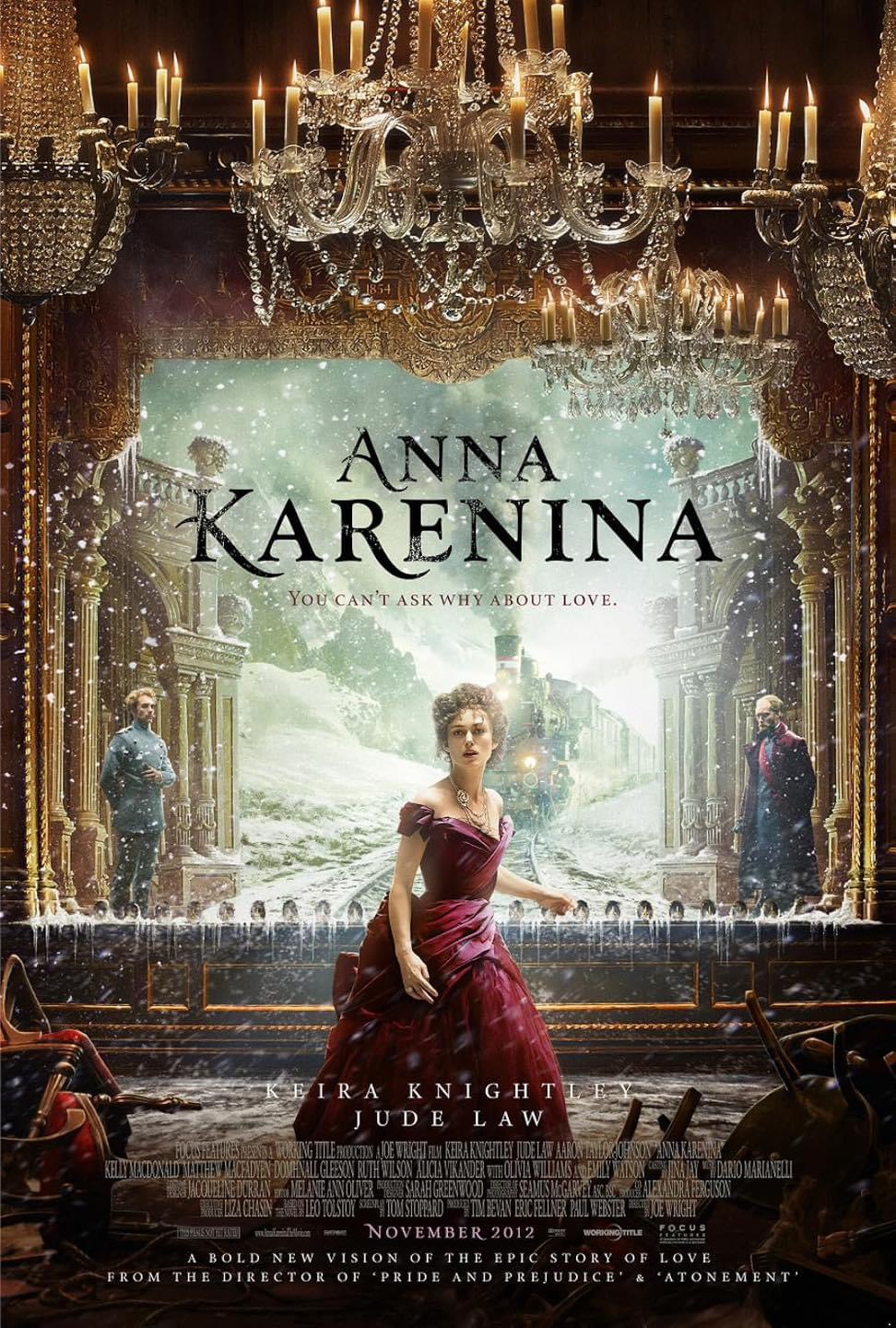
Anna Karenina (2012), directed by Joe Wright and based on Leo Tolstoy’s classic novel, is a visually stunning and daring reimagining of one of the greatest works of Russian literature. Known for his innovative approach to adaptation, Wright brings a fresh, theatrical sensibility to the material, which has been the subject of countless adaptations since its publication in 1877. With a screenplay by Tom Stoppard, the film is set in late 19th-century Russia and centers on the tragic love affair between Anna Karenina (Keira Knightley), the wife of a prominent government official, and Count Alexei Vronsky (Aaron Taylor-Johnson), a charismatic officer.
While the film takes substantial liberties with the source material, blending theatrical sets, operatic gestures, and modern sensibilities, it remains a compelling exploration of the emotional turmoil, societal pressures, and moral dilemmas faced by its central characters.
Suggested videos for you:
Story and Themes:
The plot of Anna Karenina follows Anna, who is trapped in a loveless marriage to the cold, bureaucratic Karenin (Jude Law). When she meets the handsome and passionate Count Vronsky, they embark on an affair that scandalizes society and leads to devastating consequences for all involved. The film explores Anna’s inner conflict between duty and desire, love and guilt, freedom and societal constraint.
At its heart, Anna Karenina is about the complexities of love, the rigidity of social conventions, and the tragedy of self-destruction. Anna’s emotional unraveling serves as a powerful metaphor for the tension between personal happiness and social responsibility. Her pursuit of an intense, unrestrained passion with Vronsky ultimately leads her to a breakdown as she faces public condemnation, the collapse of her family, and her own growing sense of isolation.
The film explores these themes through a variety of characters, most notably Levin (Domhnall Gleeson), a landowner who is in love with the self-assured Kitty (Alicia Vikander), and whose narrative is often juxtaposed with Anna’s. Levin’s story provides a contrast to Anna’s, as he struggles with the pursuit of personal fulfillment through hard work, familial devotion, and finding balance between his heart and mind. His relationship with Kitty embodies the more hopeful aspects of love and marriage in the film, offering a counterpoint to Anna’s doomed affair.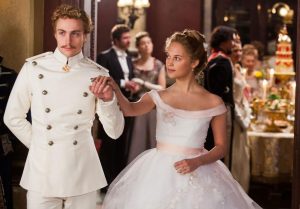
Direction and Cinematography:
Joe Wright’s direction is one of the most distinctive features of Anna Karenina. The film adopts a highly stylized, almost surrealistic approach, which sets it apart from other historical dramas. Rather than creating a traditionally immersive historical world, Wright uses a minimalist, theatrical design where the boundaries between stage and reality blur. The majority of the film takes place on an elaborate set that constantly shifts, with scenes unfolding in rooms, halls, and carriages that seem to seamlessly transition into one another. This stage-like quality of the set design emphasizes the idea that the characters are trapped in a kind of theatrical performance—a play where they are forced to perform roles dictated by society, even as they struggle to break free of them.
The fluidity of the cinematography, by Seamus McGarvey, is equally striking. Many of the scenes are filmed in long takes, often with sweeping camera movements that glide through the set, emphasizing the artificiality of the constructed world. This technique reflects the characters’ feelings of entrapment and their inner emotional turmoil. The film’s use of lighting, especially in the contrast between light and shadow, adds to the oppressive atmosphere, visually reinforcing Anna’s spiraling descent into despair.
One of the most memorable stylistic choices in Anna Karenina is Wright’s use of theatrical symbolism, such as choreographed movement in scenes of public gatherings or the recurring image of trains and the railway, which symbolize both the inevitability of Anna’s tragic fate and the transitory nature of her affair with Vronsky.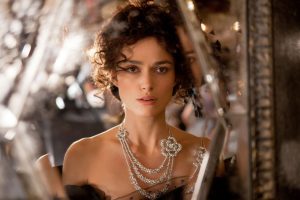
Performances:
Keira Knightley gives a commanding performance as Anna, capturing her emotional complexity with subtlety and nuance. Her portrayal is one of raw vulnerability, as Anna teeters between the exhilaration of her passionate love affair and the crushing guilt that comes with it. Knightley’s delicate yet forceful performance shows Anna as a woman torn between the constraints of social expectation and the seductive pull of her own desires. She conveys Anna’s internal conflict with a remarkable depth of feeling, ensuring that Anna’s tragic fall remains profoundly sympathetic, even as her choices lead her down a self-destructive path.
Aaron Taylor-Johnson brings a striking intensity to the role of Count Vronsky. His portrayal of the dashing officer captures the emotional immaturity and selfishness of a man who initially seems to be driven purely by lust, but whose affection for Anna grows into something more complicated and ultimately doomed. The chemistry between Knightley and Taylor-Johnson, while palpable, underscores the unbalanced nature of their relationship, as Vronsky’s devotion to Anna appears less grounded in sacrifice than in romantic idealization.
Jude Law’s portrayal of Karenin is perhaps the most poignant of the film. Initially seen as cold and unfeeling, Karenin’s character evolves as the film progresses, revealing the deep emotional conflict beneath his rigid exterior. Law’s performance is restrained yet quietly devastating, especially as Karenin faces the public humiliation of his wife’s affair and struggles with his own feelings of betrayal. He presents Karenin as a man torn between duty, shame, and a desire to maintain his honor.
Domhnall Gleeson and Alicia Vikander shine as Levin and Kitty, offering a more hopeful perspective on love. Levin’s philosophical and emotional journey, marked by his struggles with faith, work, and identity, provides the emotional grounding for the film. Vikander’s Kitty, initially portrayed as a naive young woman, grows into a character of strength and understanding, making her relationship with Levin feel genuinely redemptive.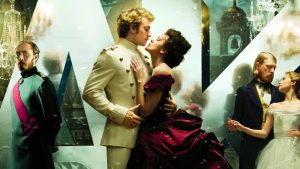
Music and Soundtrack:
The musical score by Dario Marianelli, who previously collaborated with Wright on Pride & Prejudice (2005), complements the film’s rich emotional landscape. The music, often sweeping and grand, is paired with more intimate moments of reflection, underscoring the emotional highs and lows of the narrative. The score also uses the recurring motif of trains, which echo throughout the film both musically and thematically, reinforcing the idea of inevitability and fate.
However, the film’s unconventional structure, particularly its use of dance and music in certain sequences, could be off-putting for some viewers. While it’s an artistic choice that reflects the stylized nature of the world Wright has created, there are moments when the film’s theatricality might overshadow the emotional impact of certain scenes.
Criticism:
Some viewers might find the film’s surreal, stage-like quality distancing rather than immersive. The highly stylized direction may seem overly artificial, taking the viewer out of the emotional experience rather than drawing them deeper into it. Additionally, the film’s pacing can be uneven at times, with certain sections feeling rushed, especially in the depiction of Anna’s deteriorating mental state and her final tragic actions. The treatment of secondary characters can also feel somewhat underdeveloped compared to the depth given to Anna, Vronsky, and Levin.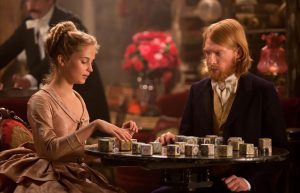
Conclusion:
Joe Wright’s Anna Karenina is a bold, visually striking interpretation of Tolstoy’s classic novel. Its stylized, theatrical approach may not appeal to all audiences, but for those willing to embrace its artistic audacity, the film offers a powerful, emotionally rich experience. The performances, particularly by Knightley, Law, and Taylor-Johnson, are exceptional, capturing the tragedy and complexity of their characters’ lives. While it departs from a more traditional adaptation, Anna Karenina successfully captures the novel’s timeless themes of love, betrayal, and the human cost of societal expectations. The film may not be for everyone, but it remains an impressive, thought-provoking reimagining of a literary masterpiece.










